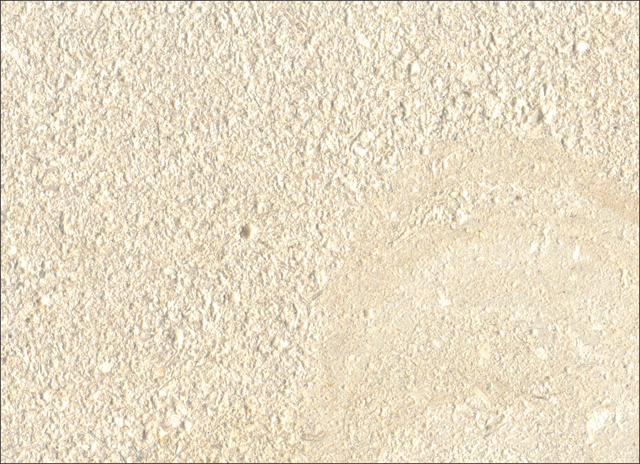NEOGENIC LIMESTONE

The limestone from Pińczów, popularly called “pińczok“, belongs by its classification in light limestone. Its deposits can be found south from the town Kielce in a 40 kilometres wide zone between the villages Busko-Zdrój and Pińczów. The area is rich in many deposits that vary in size, the largest among them is a quarry in the northern part of the village Pińczów.
The limestones of Pińczów were created 15 million years ago in the era of Neogene, which used to be called the Tertiary, in the coastal region of the sea. They were created from shells of Crustaceans, remains of sea creatures, and algae from the Lithothamnium family – that is why the limestone from Pińczow is also called the Lithothamnium limestone.
Medium and soft grained kinds show good resistance against frost. They are valuable and popular materials. The rock in the quarry is quite soft and easy to process. In the past, the same tools that were used for wood were also used for the processing of this material. This material is easy to lathe and plane. The limestone of Pińczów has a special feature. Long term exposure to weather conditions causes it to change its characteristics. It becomes harder and more resistant.
It is caused by the evaporation of water which is stored in its pores, and the crystallization of calcite that is dissolved in it and makes up the solid inner structure. This increases the overall firmness of the rock. At the same time, a 1 to 4 mm layer of patina is created on the surface which protects the stone against weather conditions. After complete drying out, the limestone acquires the characteristics similar to fired bricks.
During the renovation of the Cistercian monastery in Jędrzejow, a research of the old slabs from the Pińczów limestone. It was found out that during several centuries, the slabs have acquired significant hardness and tensile strength reaching 500 kg / cm2. Over the time, it has become five times stronger than in the day it was quarried.
The limestone of Pińczow has the longest uninterrupted tradition of use in sculpture and architecture in the whole Poland. It is not known when was it used for the first time. The oldest known creation from the limestone of Pińczów is the sculpture of an ox found during the excavations at the Wawel hill, from the turn of the 10th and 11th century. Already in the middle of the 12th, there was a big quarry in Skowron near Pińczow, that was founded for the construction of the, above mentioned, Cistercian abbey. The limestone of Pińczow was also used between the 12th and 15th century on the construction of buildings in Wiślica. It was also used as construction material for the construction of many churches in the surrounding area, and for the production of architectural elements and statues of saints.
It is worth mentioning that during the turn of 16th and 17th century, Pińczów was the biggest stone masonry centre in Poland. Italian masters lived and worked there – first Giovanni Maria Padovano, then also Santi Gucci Fiorentino. They had a huge influence on Polish sculpture at the time.
Taking into consideration the easy processability of the Pińczów limestone, its structure enables the creation of the smallest details. The strength acquired during time has made a well appreciated and sought for material. It could be supposed that half of the stone statues in Poland is made from the medium grained and soft grained varieties of Pińczów limestones.
Lithothamnium limestones were quarried in the close vicinity of Pińczów. The whole region along the river Nida contains many sacral and residential buildings that were built from this material. There are chapels, road crosses, and statues that have become known monuments in whole Poland. An important landmark of the region is the St Anne Chapel on the Monastery Hill, with a beautiful view on Pińczów.
There are historical statues, as well as current artifacts made from this material such as the statue of St. John Nepomuk in the Park of Stanisław Staszic, or the statue of “Biruta“ on the crossroad of the streets Staszica and Solna. The Church of St. Joseph the Worker in Szydłówek in Kielce is another example of the use of this material in current monumental architecture.
The limestones of Pińczów are still quarried and the unique material is still largely in demand.

Source: Kurier kamieniarski
